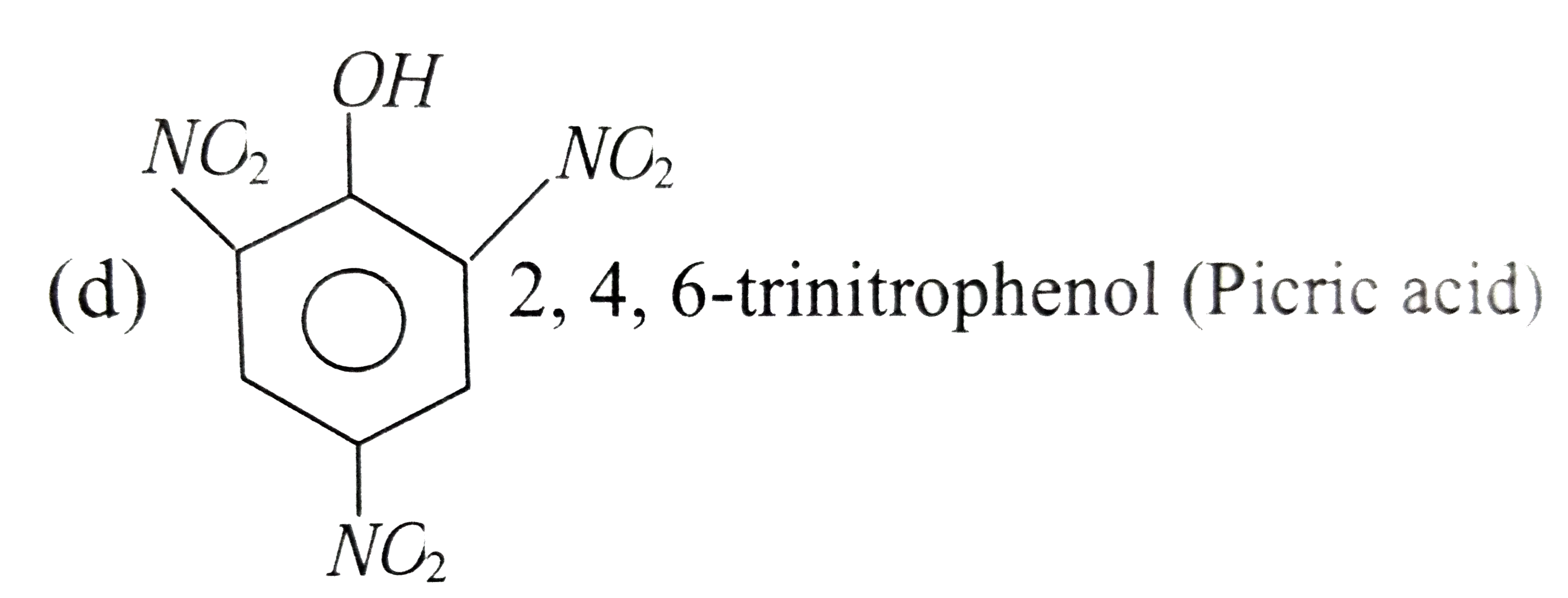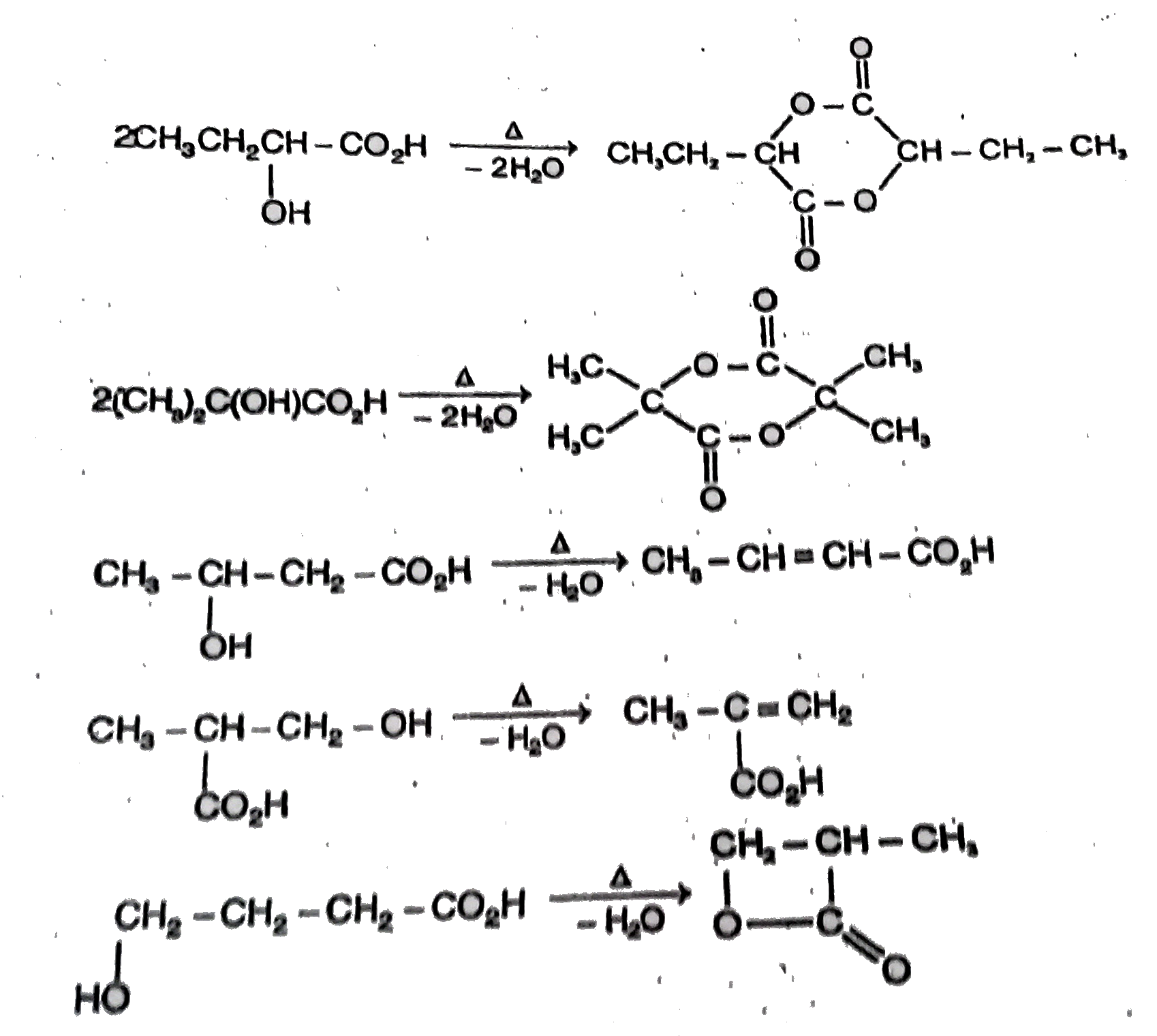InterviewSolution
This section includes InterviewSolutions, each offering curated multiple-choice questions to sharpen your knowledge and support exam preparation. Choose a topic below to get started.
| 1851. |
Which of the following elements does not form stable diatomic molecules |
|
Answer» IODINE |
|
| 1852. |
The standard reduction potential for Cu^(2+)//Cu is +0.34 V. Calculate the reduction potential at pH=14 for the above couple. K_(sp) of Cu(OH)_(2) is 1.0xx10^(-19). |
|
Answer» |
|
| 1853. |
Whichseries ofreactions correctlyrepresents chemicalreactionsrelatedto ironanditscompound ? |
|
Answer» `Fe overset (O_2, "heat ") toFe _ 3 O _ 4overset (CO,600^(@)C) toFeOoverset (CO, 700^(@)C) toFe ` Option(b) and(c )arewrongbecause` FeSO_4 `onheatinggives ` Fe_ 2 O_ 3 , SO_ 2and SO_ 3`andnot Fe. `2 FeSO _ 4overset (DELTA ) toFe _ 2 O_3+SO_3+ SO_2` Option(d) iswrongbecausein presenceofair,reductionof` FeCl_ 3`to` FECL _2`cannotoccur. |
|
| 1854. |
When copper plate is kept in 0.1 M solution of CuSO_(4) at 298K temperature and if 70% dissociation is occurred then calculate the potential of copper electrode. |
|
Answer» Solution :REACTION : `Cu^(2+)+2E^(-) to Cu_((S))` CONCENTRATION of `Cu^(2+)`=molarity`xx`percentage of dissociation `therefore [Cu^(2+)]=0.1xx(70)/(100)=0.07M` As per Nernst EQUATION, where, `E_(Cu^(2+)|Cu)^(Theta)=+0.34V` `E_(cell)=E_(cell)^(Theta)-(0.059)/(n)"log"([Cu_((S))])/([Cu^(2+)])""n=2` `=0.34-(0.059)/(2)"log"(1)/(0.07)` `=0.34-(0.059)/(2)"log"(1)/(0.07)` `0.34-(0.0295)log(14.286)` `=0.34-(0.03407)=0.3059V` If dissociation is less than 100% then `[Cu^(2+)]` and potential both decreases. |
|
| 1855. |
Those simple organic molecules which chemically combine with one another and form a polymer, is called ……………… |
| Answer» SOLUTION :monomer | |
| 1856. |
Write the chemical reaction of a carboxylic acid with: (a) Na_(2)CO_(3) (b) PCl_(5) (c) NH_(3). |
|
Answer» Solution :(a) `2RCOOH+Na_(2)CO_(3) to 2RCOONa+H_(2)O+CO_(2)` (B) `RCOOH+PCl_(5) to RCOCl+POCl_(3)+HCl` (c) `RCOOH+NH_(3) to RCOONH_(4)`. |
|
| 1857. |
What isthe role of limstonein theextractionof ironfromitsoxides ? |
|
Answer» Solution :Eitherlimestone itself or CaO obtained by itsthermaldecomposition actsas abasicfluxin theextractionof ironfromitsoxides. Itremoves acidicimpurityof` SiO_2`presentin the oxide ore to form FUSIBLE calciumsilicate SLAG. `UNDERSET ("Basic flux")(CaCO_3(s)) +underset ("ACIDIC IMPURITY")(SiO_2(s)) overset (1123K) to underset ("Cal.silicate")(CaSiO_3(slag)) + CO_2(g) ` Altrnatively, `""CaCO_3(s) overset (1123K) toCaO(s) + CO_2(g) ` `""underset ("Basic flux")(CaO(s)) +underset ("Acidic impurity")(SiO_2(s)) overset (1123K)tounderset ("Cal.silicate")(CaSiO_3(slag)) ` |
|
| 1858. |
Which property of an element is not variable : |
|
Answer» Valence |
|
| 1859. |
Which acid will not form hydrocarbon |
|
Answer» Cinnamic ACID 
|
|
| 1860. |
Which method is used to determine the molecular mass of polymer molecules like colloid? |
|
Answer» Depression in FREEZING point |
|
| 1861. |
Which of the following halideso is most reactive towards nucleophilic substitution reaction? |
| Answer» Answer :D | |
| 1862. |
Which one of the following compounds is not formed? |
|
Answer» `XeOF_(4)` |
|
| 1863. |
Which of the following is used to prepare CI_(2) gas at room temperature from concentrated HCI? |
|
Answer» `MnO_(2)` `2K MnO_(4) + 3H_2SO_4 to K_2SO_4 + 2 MnSO_4 + 3H_2O + 5O` `[2HCl + O to H_2O + Cl_2] xx 5` `2KMnO_4 + 3H_2SO_4 + 10 HCl to K_2SO_4 + 2MnSO_4 + 8H_2O + 5Cl_2`. `:. KMnO_4` is USED to prepare `Cl_2` from concentrated HCl. |
|
| 1864. |
Which of the following would undergo dehydration most readily |
|
Answer» 1-phenyl-1 butanol |
|
| 1865. |
Which one of the following can be classified as a Bronsted base |
|
Answer» `NO_(3)^(-)` |
|
| 1866. |
When diethyl ether is treated with CI_(2) in the presence of dark. Then the product formed is |
|
Answer» `CH_3CCI_2-O-CH_2CH_3` |
|
| 1867. |
Which of the following reaction is used to make a fuel cell? |
|
Answer» `Cd_((s)) + 2NI(OH)_(3(s)) to CdO_((s)) + 2Ni (OH) + H_2O_((l))` |
|
| 1868. |
The total number of carboxylic acid group in the product P is |
Answer» 
|
|
| 1869. |
Which mixed sulpate is not an alum ? |
|
Answer» `K_2SO_4. Al_2(SO_4)_3. 24H_2O` |
|
| 1870. |
Which of the following molecuels has S-configuration? |
|
Answer»
|
|
| 1871. |
What are fuel cells ? Write the electrode reactions of a fuel cell which uses the reaction of hydrogen with oxygen. |
|
Answer» Solution :Those cells in which DECIMAL energy of fuel is converted into electrical energy are called fuel cells. ELECTRODE reactions `{:("At anode", H_(2)(g) + 2OH^(-) (aq) to 2H_(2)O (L) + 2e^(-) xx 2),("At CATHODE", O_(2)(g) + 2H_(2)O(l) + 4e^(-) to 4OH^(-) (aq)),("Net cell reaction", 2H_(2) (g) + O_(2) (g) to 2H_(2)O(l)):}` |
|
| 1872. |
Which of the followingon oxidation gives an acid containing two carbon atoms: |
|
Answer» Ethanol |
|
| 1873. |
Whty is it necessary to remove CO when ammonia is obtained by Haber process ? |
|
Answer» |
|
| 1874. |
The volume of 0.1 M H_2SO_4 required to neutralise 30 ml of 2.0 M NaOH is : |
| Answer» Answer :B | |
| 1875. |
Which amont the following is not a borane? |
| Answer» Solution :Nido borane: `B_(n)H_(4+n)`, aracno borane `B_(n)+H_(6+n), B_(3)H_(6)` is not a borane. | |
| 1876. |
Which of the statements regarding SN^2reaction is correct |
|
Answer» Overall order of REACTION is two |
|
| 1877. |
Which of the following oxides is netural |
|
Answer» CO |
|
| 1878. |
Which of the following is mond gas ? |
|
Answer» CO |
|
| 1879. |
Assosiated colloids |
|
Answer» Which consist of aggregate of atoms and molecules with diameter less than 1 mm Soap at low conc BEHAVES as TRUE soluton |
|
| 1880. |
Trans-esterification means |
|
Answer» preparation of ESTER from ester |
|
| 1881. |
Which of the following option is correct for first order reaction? |
|
Answer» MOLECULARITY is zero |
|
| 1882. |
The two compounds (I) and (II) are related as : |
|
Answer» ENANTIOMERS  , THEREFORE I and II are identical , THEREFORE I and II are identical
|
|
| 1883. |
Which is more basic among aqueous solutions of aniline and ammonia ? Give one reason? |
| Answer» SOLUTION :`-NH_(2)`, group is attached directly to the benzene ring & the unshared electron PAIR on nitrogen ATOM in conjugated with benzene ring. | |
| 1884. |
What happens when propanol-1 is oxidised ? |
| Answer» SOLUTION :PROPIONALDEHYDE is FORMED. | |
| 1885. |
Which of the following ions form most stable complex compound |
|
Answer» `Cu^(++)` `Mn^(2+)ltFe^(2+)ltCo^(2+)ltNi^(2+)ltCu^(2+)ltZn^(2+)` |
|
| 1886. |
Three spheres of the first layer and three of the second layer enclosed a site at the centre in a closest packing arrangement this site is called |
|
Answer» INTERSTITIAL void |
|
| 1887. |
Which sta.tement is correct? |
|
Answer» Law of mass action and rate I.aw EXPRESSIONS re same for SINGLE step-reactions |
|
| 1888. |
The reductionof whichof the followinggives1-propanamine ? |
|
Answer» `C_(3)H_(7)CN` |
|
| 1889. |
The role of conc. H_(2)SO_(4) in the esterification process is |
|
Answer» CATALYST |
|
| 1891. |
which is the first order reaction? |
|
Answer» `NH_4NO_2 to N_2+2H_2O` |
|
| 1892. |
Which methods are usually employed for purifying the following metals : Germanium. |
|
Answer» Solution :Germanium : Germanium is refined by zone REFINING. Principle : The principle of the method is IMPURITIES are more SOLUBLE in the MELT than in the solid state of the metal. |
|
| 1893. |
Which of the following cannot form a carbanion when treated with dil.NaOH? |
|
Answer» `CH_3CH_2CHO` |
|
| 1894. |
Which point defect in crystals does not alter the density of the relevant solid ? |
| Answer» SOLUTION :FRENKEL DEFECT. | |
| 1895. |
Which reagent will you use for the following reactions? CH_(3)CH_(2)CH_(2)CH_(3) to CH_(3)CH_(2)CH_(2)CH_(2)Cl+CH_(3)CH_(2)CHClCH_(3) |
|
Answer» `Cl_(2)//UV` light |
|
| 1896. |
Which of the following reactions does not take place during leaching for concentration of bauxite? |
|
Answer» `Al_(2)O_(3) + 2NaOH + 3H_(2)O to 2NA[Al(OH)_(4)]` |
|
| 1897. |
The shape of [HgI_(3)]^(-) is………… and the type of hybridisation is………… . |
|
Answer» |
|
| 1898. |
Write the chemicalnamesourceand deficientdiseaseof the following.(i) Vitamin D(ii) Vitamin E (iii) Vitamin K. |
Answer» SOLUTION :
|
|
| 1899. |
Which pair of compounds on heating give isomeric products |
|
Answer»

|
|
| 1900. |
Which acid forms zwitter ions: |
|
Answer» `CH_3COOH` and `C_2H_5OH` |
|